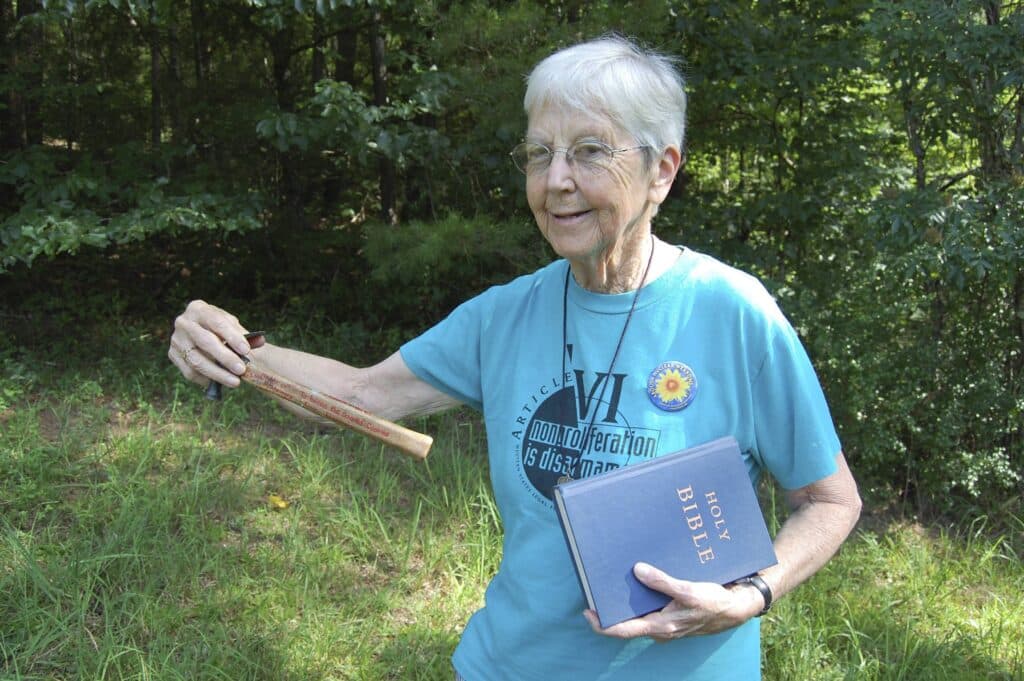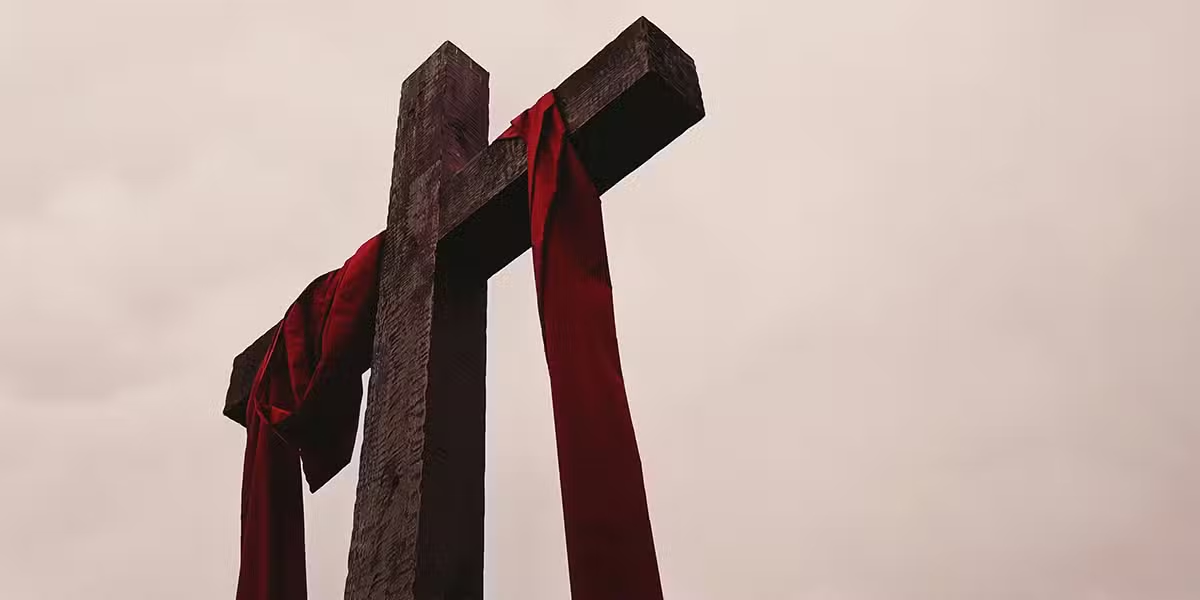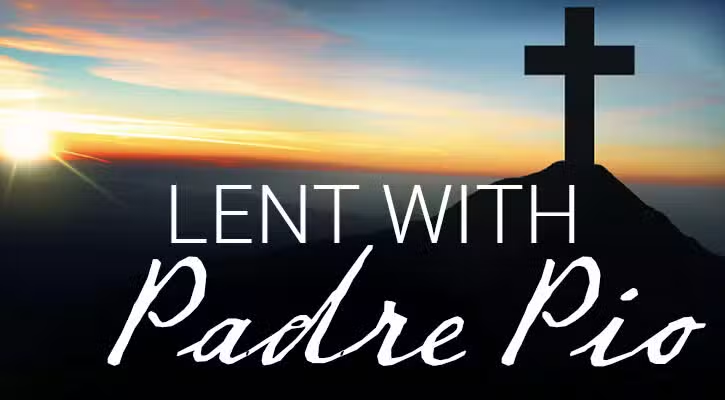With the heart of a warrior and the soul of a peacemaker, this activist boldly pushes for complete nuclear disarmament in the United States.
She’s been emblazoned on the front page of the New York Times, invited to a congressional hearing, and is now the subject of a feature-length documentary. Yet Sister Megan Rice, a member of the Society of the Holy Child Jesus, never set out for recognition or glory. For her, all the attention is a somewhat unwelcome consequence of her daring attempt to prod the United States into complete nuclear disarmament.
“We feel that by doing direct actions that are a little dramatic, don’t do any damage, they’re nonviolent, we wake the public up. That’s the point,” she explains, speaking on the phone from the Holy Child Jesus community in Washington, DC, where she now resides.
Sister Megan, a petite octogenarian with a winning smile and quiet concern for everyone but herself, felt that something dramatic was needed to turn this nation’s mind toward disarmament. She had already spent decades—and been arrested over 40 times—protesting nuclear weapons in small acts of civil disobedience. But the plan that she and two fellow activists executed on July 28, 2012, not only proved her boldness, but also sent shock waves across the country.
Breaking In to the ‘Fort Knox of Uranium’
Catholic teaching has condemned the use of nuclear weapons since the inception of the A-bomb. In a 2017 statement, Pope Francis took a step further and declared that even the possession of these weapons was immoral. According to the Federation of American Scientists, as of June 2018, the United States still has approximately 6,450 nuclear weapons—a quantity second only to Russia’s 6,850 weapons but far overshadowing the country with the third-largest supply, France, which has 300.
Convinced that inaction was inadmissible, Sister Megan and two others set off around 2:30 a.m., their path lit only by flashlights that they had taped to emit just a sliver of light. They soon entered the Y-12 National Security Complex in Oak Ridge, Tennessee, breaching the chain-link fence with bolt cutters. This sprawling site fabricates and stores the nation’s stockpile of weapons-grade uranium, some of which was used in the atomic bomb that devastated Hiroshima over seven decades ago.
Sister Megan was 82 at the time. The quarter-mile hike through the thick forest and up the steep ridge that borders the northern grounds of the complex left her leaning on the arm of fellow activist Greg Boertje-Obed for support. The third member of the party, Vietnam veteran Michael Walli, walked ahead and attempted to beat a pathway through the brush.
“It was a long hike for her, [and] we had to stop frequently for her to catch her breath,” recalls Walli, noting that Sister Megan pushed on despite a mild heart condition.
After more than an hour, they reached the protected area. Self-styled as the “Fort Knox of Uranium,” the building that stores the radioactive material looks like a huge, bleached fortress. The windowless, white concrete walls are crowned with armed guard towers and surrounded by three chain-link fences that are laced with motion sensors, video cameras, and other detection technology. Signs declare that lethal force is authorized, meaning that trespassers can be shot dead on sight, no questions asked.
“She is very faith-filled and hopeful, more than me even,” says Boertje-Obed. “She, from the very beginning, would say, ‘We can do this. We can do this. We can overcome these obstacles.'”
Sister Megan walked right in after the men cut through the fences with bolt cutters. Walli and Boertje-Obed followed. No audible alarms went off and no guards acknowledged the intrusion for more than half an hour. A series of security failures would later be uncovered during a scathing investigation by members of the Department of Energy’s Office of Inspector General.
Emboldened, the activists spread symbolism around the base of the fortress, including a Bible, white roses, and donated blood. Sister Megan draped crime scene tape near the wall to highlight her conviction that nuclear weapons are crimes against humanity. Walli spray-painted messages on the white surface, such as “The fruit of justice is peace” and “Woe to an empire of blood.” Boertje-Obed used a small sledgehammer to dislodge a chunk of the concrete wall and “begin” the destruction of all weapons-manufacturing facilities. Eventually they were discovered and arrested, but not before the three approached an armed security guard to read a statement “indicting” the US government for its nuclear modernization program.
The Fallout
News of the security breach, aggravated by the fact that it was led by an 82-year-old nun, spread like wildfire. The story was on the front page of the New York Times and was broadcast by both serious and satirical news outlets across the country. Awaiting trial, Sister Megan was an invited guest at a congressional hearing that grilled Y-12 overseers for security failures. Congressman Joe Barton of Texas thanked Sister Megan for “bringing out the inadequacies of our security system.”
For her bold action, however, Sister Megan ultimately ended up with a prison sentence. She, Walli, and Boertje-Obed were convicted of depredation of property and sabotage, translated as “intending to harm national security.” She was sentenced to spend nearly three years in federal prison, while the men were each given over five years. Pro bono lawyers eventually appealed the sabotage ruling and had all three set free, but not before each served over two years.
Yet, just as she never intended to be thrust into the limelight, Sister Megan also did not risk her life to highlight the security system—or lack thereof. Her lifelong campaign has always aimed to emphasize that these weapons should not exist at all. “It’s illegal to deal in weapons of mass destruction—immoral and illegal,” she frequently emphasizes with a characteristic vehemence. Her judgment of “illegal” refers to the 1970 Treaty on the Non-Proliferation of Nuclear Weapons that binds countries with nuclear weapons, including the United States, to move toward disarmament.
A Born Activist
From an early age, Sister Megan seemed almost destined to become an antinuclear expert and ad hoc spokeswoman. She was only 3 years old when her parents hosted peace activist Dorothy Day in their New York City home, a memory Sister Megan still vividly recalls. She also remembers feeling shocked at the age of 9 when she was told that the man next door was working on something so secret that he could not even tell his wife. It would be years before she learned that this man was a Columbia University biophysicist involved in the Manhattan Project.
When Sister Megan was 15, the atomic bombs were dropped on Hiroshima and Nagasaki. Her mother’s brother, Walter Hooke, had been deployed as a Marine in the Pacific. After the second bomb fell, Hooke was sent to Nagasaki where he would witness firsthand the devastation that was caused by the blast. He was also tasked with driving the archbishop of Nagasaki, Paul Aijir≈ç Yamaguchi, recently returned from mandatory government service, to the site where his decimated cathedral once stood.
“The mother of the archbishop and his sister had been at Mass on the ninth of August, when the bomb hit Nagasaki, and [they] were incinerated in the cathedral,” Sister Megan relates. “[My uncle] was furious about the bomb. He was totally ‘conscientized’ by what he saw. How could his country ever do something like this?”

Sister Megan entered the Society of the Holy Child Jesus in 1947 and took her final vows in 1955. Shortly afterward, she pursued a master’s degree in biology, trained at Harvard, and became the first person at Boston College to use a radioactive tracer as she studied cancer. The next four decades of her life led to her conviction that not only was the use of nuclear weapons immoral, but their very existence was a scourge to humanity.
Her order sent the then-32-year-old to West Africa and tasked her with teaching impoverished communities in Nigeria and Ghana. After sleeping in classrooms without running water or electricity, Sister Megan began to become convinced that the money this country spends on defense should be invested elsewhere.
“How could the United States be spending all this money on an airplane to kill people when [the African people] would see [that] an airplane should be used to enrich people, [for] relaxation and entertainment?” she wonders aloud.
Taking on a Multi-Billion Dollar Industry
The United States spent $509 billion, or 3.1 percent of the gross national product, on defense in the 2017 fiscal year, according to the Congressional Budget Office (CBO). This roughly compares to the 3.1 percent spent on Medicare, or the 3.2 percent spent on the combined “programs related to transportation, education, veterans’ benefits, health, housing assistance, and other activities,” as the CBO phrases the grouping. To look at the numbers another way, about half of lawmakers’ “discretionary spending” goes to national defense.
“I consider it one of the root causes of, say, poverty in the United States, and therefore of crime,” Sister Megan says of the nuclear weapons program, which requires constant upkeep and modernization. “It’s a root cause of many other issues because so much money is going into them and much, much of that money goes into the people’s pockets.”
She eventually found out for herself that the multibillion-dollar security contract could not keep an octogenarian nun out of Y-12. Her action was arguably the most disruptive, but over 100 more or less dramatic protests have breached security at nuclear-related sites across the country. Collectively known as “Plowshares ” actions, the name comes from a prophecy in the Book of Isaiah that predicts a peaceful world in the future where nations “shall beat their swords into plowshares” (2:4).
The first Plowshares action was staged in 1980 by brothers Phil and Dan Berrigan, both priests and well-known peace activists at the time. The two men and six others snuck onto a naval base in King of Prussia, Pennsylvania, spread blood on documents, and symbolically “disarmed” nuclear weapons with a small hammer.
Sister Megan would come to know the Berrigan brothers personally. She would also be present when five Plowshares activists, among whom was 83-year-old Sacred Heart Sister Anne Montgomery, were sentenced to prison for similarly breaking in to the Naval Base Kitsap’s Bangor complex in Tacoma, Washington.
Reaching a Broader Audience
“What I found with these people is their true motivation is so pure, and their only agenda, for want of a better word, is their compassion for humanity,” says Helen Young, a documentarian and Emmy-winning producer. Young was already following the story of Sister Anne and the four other Bangor protesters when Sister Megan staged her action. For Young, Sister Megan was a natural focal point of the documentary that she eventually would name The Priests, the Nuns, and the Bombs, unwilling as Sister Megan was to be in the limelight.
“Attention will focus on what is the most startling part of [the story] and that was it,” says Young, describing Sister Megan’s bold action at the age of 82. “And I explained that to her, and she said to me, ‘OK, dearie, if I need to be your visual aid, I will be,'” Young recalls with a laugh.
Sister Megan has now been the “visual aid” at over 20 screenings of the documentary, greeting audiences at locations such as the United Nations, George Washington University, the University of Notre Dame, and the Center for Study of Responsive Law and Essential Information in Washington, DC. Some high schools have requested that Sister Megan make a digital appearance as a Skype guest.
“I have tremendous respect for all of these individuals,” says Young of the activists in her documentary. “Whether you believe or agree or disagree with their political or particular philosophy on this issue, you cannot argue with their dedication and commitment.”
Sister Megan’s life continues to be dedicated to what she calls “nuclear resistance.” When she’s not touring with the documentary or at prayer with her community, she is answering e-mails or reading articles related to disarmament. Every Friday, she stands outside the White House with posters protesting the nuclear program.
She still keeps up with the imprisoned, especially other activists who are serving sentences for antiwar protests. “It’s very easy to fill up a postcard,” she says with a laugh.
When Sister Megan spoke at a documentary screening at the University of Notre Dame, she carried the same backpack that had been on her back during the nation’s largest nuclear security breach. But, in true form, Sister Megan was not flaunting it as an artifact. She simply needed something to carry her belongings.








